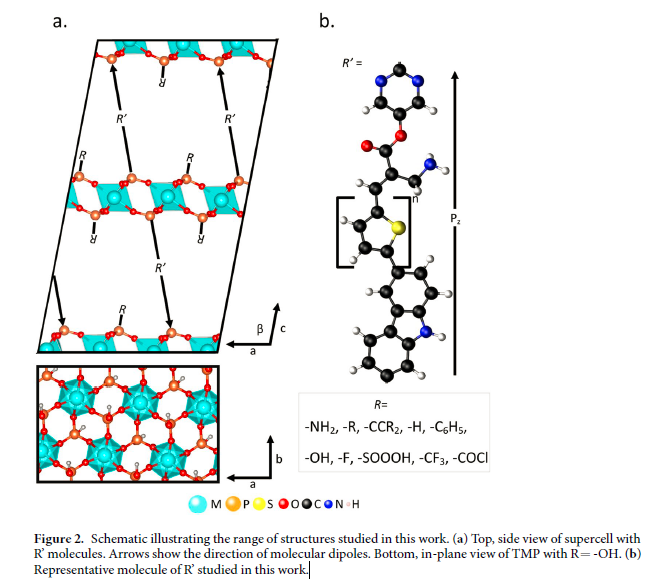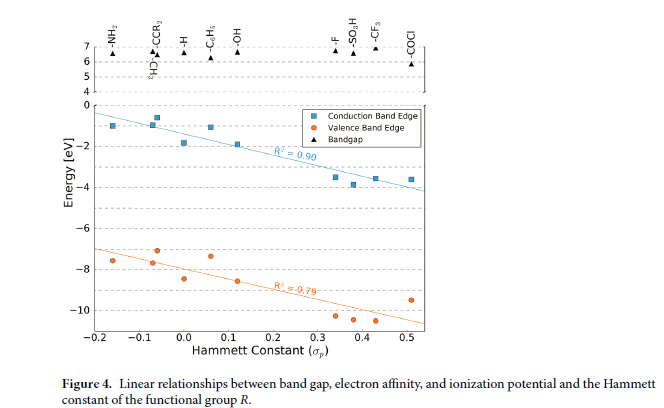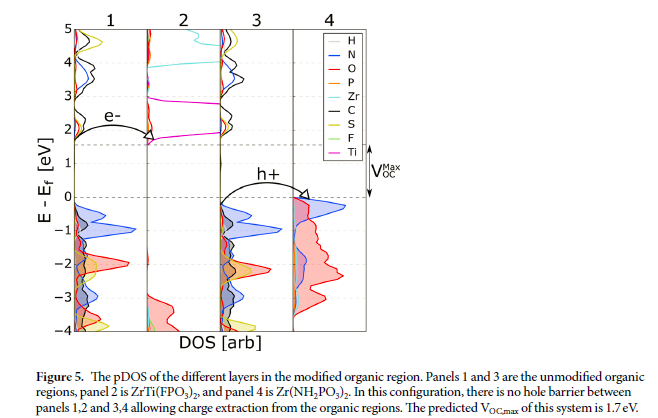Sunshine Factory, Co., Ltd. > Applications > Hybrid PhotovoltaicsHybrid Photovoltaics
First-principles design of nanostructured hybrid photovoltaics based on layered transition metal Zirconium phosphates
Abstract
The performance of bulk organic and hybrid organic-inorganic heterojunction photovoltaics is often limited by high carrier recombination arising from strongly bound excitons and low carrier mobility.
Structuring materials to minimize the length scales required for exciton separation and carrier collection is therefore a promising approach for improving efficiency.
In this work, first-principles computations are employed to design and characterize a new class of photovoltaic materials composed of layered transition metal phosphates (TMPs) covalently bound to organic absorber molecules to form nanostructured superlattices.
Using a combination of transition metal substitution and organic functionalization, the electronic structure of these materials is systematically tuned to design a new hybrid photovoltaic material predicted to exhibit very low recombination due to the presence of a local electric field and spatially isolated, high mobility, two-dimensional electron and hole conducting channels.
Furthermore, this material is predicted to have a large open-circuit voltage of 1.7 V.
Approach Nanostructured PV Design
The proposed material architecture is illustrated schematically in Fig. 1.

Materials Platform
Experimental measurements of zirconium phosphate show that bulk conductivity can tuned from about 0.001 to 1 S/cm via intercalation of cations such as Li, Na, and K between the 2D sheets.
we focus on materials based on α-Zr(HPO4)2, as illustrated in Fig. 2, an organic molecule that has been used as an absorber in dye-sensitized solar cells and R is a functional group on the TMP.

Discussion




Conclusions
Presented a new approach for the design of hybrid organic-inorganic photovoltaics with low carrier recombination and large open-circuit voltage.
Demonstrated that layered transition metal Zirconium phosphates provide a highly tunable framework for realizing such materials, and we have predicted a specific new material, based on zirconium phosphate covalently bound to a derivative of a known dye-sensitizing molecule, MK2, that forms an ordered organic-inorganic bulk superlattice with nanostructured dimensions.
Predict that this material has a large open-circuit voltage of 1.7 eV and, further, will exhibit low carrier recombination due to a combination of large local electric fields, nanoscale carrier diffusion distances, spatially localized conduction and valence band edge states, and relatively high mobility electron and hole conducting layers.

Follow WeChat


